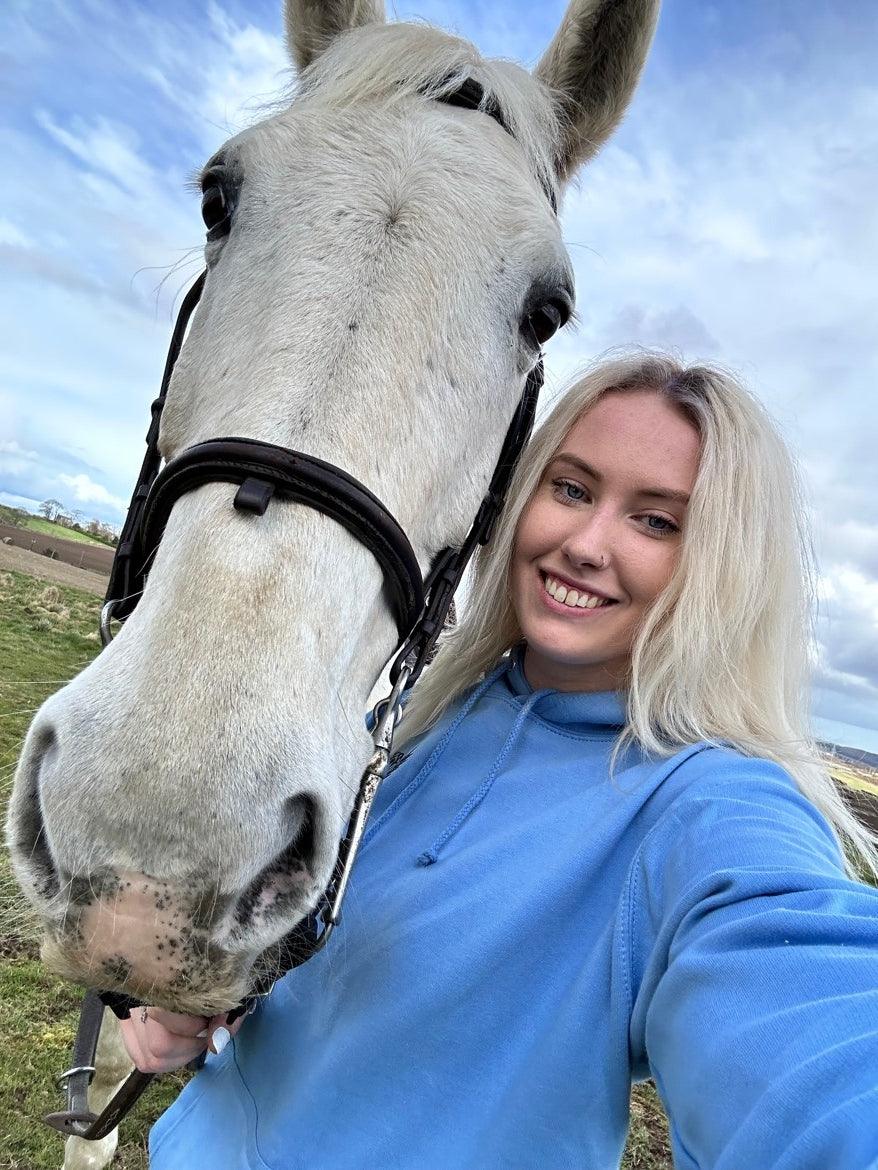
Signs of Stress in Horses
Signs of Stress in Horses
With April being stress awareness month, we’re looking at signs of stress in horses which can often be overlooked or be mislabelled as a “vice”. A vice is a label for a behaviour in a horse which has a negative impact, such as wind sucking or weaving. This label is not accurate as it implies it’s the horse’s fault when these behaviours can be signs of stress due to management or a situation they are in.
The most common signs of stress in horses include an elevated TPR, increased sweat, flared nostrils, cribbing, wind sucking, box walking, weaving, door kicking, wood chewing, a refusal to move when ridden or leading, head tossing/shaking, rearing, bucking or bolting. Horses can become stressed for a variety of reasons and it’s important to look at their management to find out what could potentially be causing it.
Although we have domesticated horses, they are still fight or flight animals and the majority do best when their management mimics that of their previous wild environment. An example of this is turnout – a horse on box rest or with too much time stabled indoors will likely show stress by box walking, weaving or door kicking. They may also pin back their ears as people walk past. Studies have gone into depth about the causes of these behaviours however there is not much about whether they can be fully stopped or just managed. The above mentioned behaviours can be managed by increasing turn out – if turnout is not available then even putting them into an arena to stretch their legs is beneficial. For those on box rest it is a lot harder to manage, and it would be a good idea to consult your vet.
Cribbing, wind sucking, and wood chewing all are signs of a deficiency in nutrition. They can be signs of the horse trying to buffer its stomach acid, although there is still conflicting research on this. Wood chewing can also be a sign that the horse needs to increase roughage in its diet. It’s a good idea to investigate what quantities you’re feeding and contact a nutritionist if you’re unsure. Feeding a small amount of fibre before riding can help provide a barrier to prevent stomach acid splashing and potentially even leading to ulcers.
Ridden behaviours such as bucking bolting or rearing are a lot harder to figure out. These could be due to management, pain, ill-fitting tack or confusion/fear. It’s a good idea to look at management first – is the horse having enough time to play in the field with its friends to lose some energy? Check feed, are you over feeding too much energy? In particular a quick releasing source? If there’s nothing management related that you can identify which may be causing the issue, get a professional to check your horses’ feet aren’t causing them discomfort, the saddle fits well and isn’t pinching and that the bit isn’t too strong or causing a sore in a particular area of the mouth. If issues are still ongoing a vet check is always recommended. You can tie in with a chiro and massage therapist too, so you’ve covered all bases. The final option is to change up what you’re asking of the horse – it may simply not understand what is being asked of it or it may be bored of its work and need a variation.
ECLAT HQ’s TOP TIPS
- Managing your horse so it has the five freedoms puts you in good stead to eliminate stress. These are: freedom from hunger and thirst, freedom from physical and thermal discomfort, freedom from pain injury and disease, freedom from fear and distress and freedom to express normal patterns of behaviour.
- Remember that each horse is different! Some horses don’t cope well with being out in a field and prefer to be in a stable so it’s important to treat each horse as an individual.
